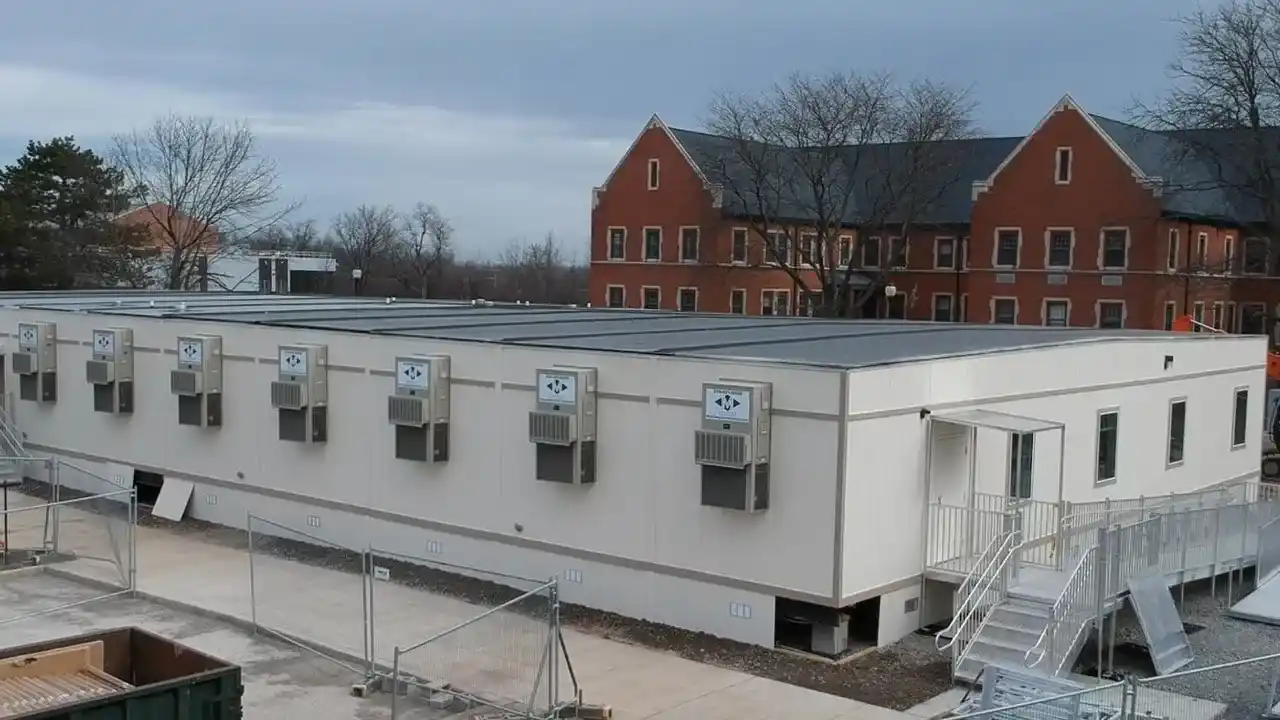10 Jun 2024

Portable buildings play a crucial role in disaster relief and humanitarian efforts, providing shelter and essential facilities during times of crisis. Portable buildings suppliers and manufacturers, including premier portable buildings, contribute to these efforts by supplying sturdy and versatile structures. These portable buildings serve as temporary shelters, medical facilities, and command centers in disaster-stricken areas, offering aid and support to those in need. With their rapid deployment and flexibility, portable buildings are making a significant difference in disaster response, helping communities recover and rebuild in the face of adversity. • Immediate Shelter: Portable buildings provide immediate shelter to displaced individuals and families during disasters. • Emergency Medical Facilities: These buildings serve as emergency medical facilities, offering first aid and medical assistance to the injured. • Command Centers: Portable buildings act as command centers for coordinating rescue and relief efforts during disasters. • Storage and Distribution: They facilitate storage and distribution of essential supplies such as food, water, and medical supplies. • Temporary Schools: Portable buildings are used as temporary schools to ensure continuity of education for affected children. • Community Centers: They serve as community centers where people can gather for support, information, and assistance. • Versatile Usage: Their versatility allows for adaptation to various needs, making them indispensable in disaster response and humanitarian efforts. • Temporary Housing: Portable buildings offer temporary housing solutions for displaced individuals and families, providing a safe and secure place to stay until permanent housing is available. • Hygiene Facilities: These buildings include hygiene facilities such as toilets and showers, promoting sanitation and preventing the spread of diseases in disaster-affected areas. • Office Spaces: Portable buildings function as office spaces for relief organizations and government agencies involved in disaster response, facilitating administrative tasks and coordination. • Mobile Clinics: They are utilized as mobile clinics to provide medical care and vaccinations to affected populations, particularly in remote or hard-to-reach areas. • Storage for Equipment: Portable buildings serve as storage facilities for equipment such as generators, tools, and emergency supplies, ensuring readiness for future emergencies. • Psychological Support Centers: They provide spaces for psychological support services and counseling to help individuals cope with trauma and emotional distress caused by disasters. • Transportable Design: Their transportable design allows for easy deployment to disaster-stricken areas, enabling rapid response and assistance to affected communities. • Limited Durability: Portable buildings may have limited durability compared to permanent structures, leading to potential damage or deterioration over time. • Space Limitations: Due to their compact size, portable buildings may not provide sufficient space for large populations or comprehensive services, resulting in overcrowding or inadequate facilities. • Dependency on External Resources: These buildings often rely on external resources such as water, electricity, and fuel, which may be scarce or difficult to access during disasters, hindering their effectiveness. • Environmental Concerns: The manufacturing, transportation, and disposal of portable buildings can have environmental impacts, including carbon emissions, resource depletion, and waste generation. • Safety Risks: Improper installation or maintenance of portable buildings can pose safety risks such as structural instability, fire hazards, or health hazards from mold or asbestos. • Social Disruption: The temporary nature of portable buildings may disrupt social cohesion and community dynamics, particularly if they are located in residential areas or public spaces for extended periods. • Stigmatization: The use of portable buildings for disaster relief may unintentionally stigmatize affected communities or perpetuate inequalities by providing temporary solutions instead of addressing underlying systemic issues. In conclusion, while portable buildings play a vital role in disaster response and humanitarian efforts, they also come with negative impacts to consider. These include durability limitations, space constraints, dependency on external resources, environmental concerns, safety risks, social disruption, and potential stigmatization. Despite these drawbacks, portable buildings remain essential temporary solutions for providing shelter, medical care, and support during crises. By addressing these challenges through improved design, maintenance, and coordination, we can enhance the effectiveness and sustainability of portable building usage in disaster response and humanitarian efforts, ensuring better outcomes for affected communities.Role of Portable Buildings in Disaster Response and Humanitarian Efforts
Impacts of Portable Buildings in Disaster Response and Humanitarian Efforts
Read more about portable building in our previous blog: "The Ultimate Guide to Portable Buildings".Conclusion